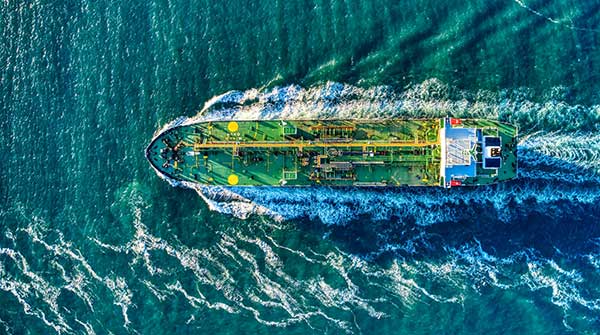Deal with the global gas giant Shell is a signal that LNG demand is viable beyond 2050
 A new 20-year deal by global energy giant Shell to purchase liquefied natural gas (LNG) from British Columbia is a sign Canada is becoming a player in global LNG markets, says an industry specialist.
A new 20-year deal by global energy giant Shell to purchase liquefied natural gas (LNG) from British Columbia is a sign Canada is becoming a player in global LNG markets, says an industry specialist.
Shell has agreed to buy two million tonnes of LNG per year from the proposed Ksi Lisims LNG project located near the Alaska border, which could start operating in 2028.
“Canada is on the map now for LNG. This is a signal that the LNG demand is viable beyond 2050,” says Racim Gribaa, president of Calgary-based Global LNG Consulting.
Gribaa has worked in energy for more than two decades, engaging with governments and industry on LNG developments around the world, including Malaysia, the United States, Canada and Qatar.
Long-term LNG deals like the one struck by Ksi Lisims and Shell are hard to come by, he says, and are a sign that so-called LNG “portfolio players” trust the ability of Canada’s natural gas industry to deliver.
A portfolio player like Shell buys LNG from various suppliers and distributes it to buyers worldwide – versus a buyer that purchases LNG solely for its own use.
“When portfolio players buy LNG, it’s not necessarily for a specific country. They can sell it anywhere they want,” Gribaa says.
“Canada’s west coast can enable them to sell cargo to efficiently meet demand in Asia without having to ship it all the way from farther locations.” Instead of shipping cargo from the Middle East, Europe, or the U.S., thereby avoiding longer journeys around the Cape or going through the Strait of Hormuz or Panama Canal, they send it straight from Canada to where they need it to go.
“It’s economically and logistically beneficial for them,” Gribaa adds.
Driven by expanding Asian economies, world LNG trade has increased by more than 200 percent since 2000, reaching 401 million tonnes in 2022, according to the International Gas Union.
Global natural gas use is rising, driving increased demand for LNG. The U.S. Energy Information Administration’s latest outlook projects natural gas consumption will rise to 197 quadrillion BTU in 2050, up from 153 quadrillion BTU in 2022.
In addition to the deal with Ksi Lisims owners including the Nisga’a Nation, Shell is also lead owner of the LNG Canada project, which is nearing completion at Kitimat, B.C.
The terminal will have a capacity of 14 million tonnes per year when it starts up in 2025. The buyers of the exports from LNG Canada are its owners, including Shell and Petronas.
Shell’s decision to purchase LNG from Ksi Lisims could ensure it has plentiful supply available regardless of the timeline of the second phase of LNG Canada, Gribaa says.
“For a portfolio player, having options is valuable. We have enough demand globally to meet both Ksi Lisims LNG and LNG Canada phase 2, especially as coal is gradually faded out from Asia’s power mix,” he says.
“The only viable solution is to replace it with natural gas through LNG, as well as renewables, so the demand is forecast to be strong for several decades to come.”
Growing Canada’s LNG exports to Asia could reduce emissions by 188 million tonnes per year, or the annual equivalent of taking all internal combustion engine vehicles off Canadian roads, according to a 2022 study by Wood Mackenzie.
Down the coast from LNG Canada at Squamish, B.C., another major portfolio player is leaning on Canadian LNG.
BP Gas Marketing is the foundational customer for the Woodfibre LNG project, where early construction is underway.
Over a 15-year period, BP will purchase 1.95 million tonnes of the project’s 2.1 million tonne per year LNG capacity, and the remaining 0.15 million tonnes per year “on a flexible basis.”
“When you have such commercial commitments inked, it provides a future perspective on supply and demand, and perhaps most importantly, it asserts the importance of Canada’s role in providing the world with a clean, affordable and secure long-term LNG supply,” Gribaa says.
Deborah Jaremko is director of content for the Canadian Energy Centre, a Troy Media Editorial Content Provider Partner.
For interview requests, click here.
The opinions expressed by our columnists and contributors are theirs alone and do not inherently or expressly reflect the views of our publication.
© Troy Media
Troy Media is an editorial content provider to media outlets and its own hosted community news outlets across Canada.


